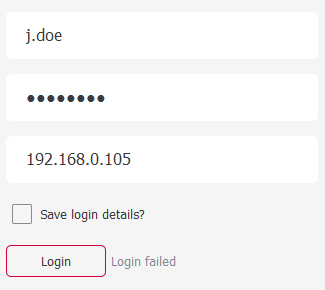Hi,
I’m a desktop developer (C#, Windows). Our customer has PBX server and wants to integrate it with our product. Could you give an advice or guideline, how we can develop a product without having a full-featured server?
At the moment, I performed following:
I downloaded PASCOM PBX (Current 64bit 17.06) from pascom Downloads - Everything you need for your pascom phone system | pascom.net and install as VM to VirtualBox. It looks like the setup process passed good. I can work with the main admin panel, REST API, XMPP Server admin panel using a browser.
I’ve found your GitHub page and the repo with an example of using XMPP protocol on C#: https://github.com/pascomnet/teleclient
Unfortunately, I was unable to force this example to work with my server installation. I enter login/password created by me user and try different variants of the server address. Simple IP (in my case it is 192.168.31.195) and with port numbers after a colon. As I can see in the XMPP admin panel, the following ports are listening:
- 5222 Client to Server The standard port for clients to connect to the server. On this port plain-text connections are established, which, depending on configurable security settings, can (or must) be upgraded to encrypted connections.
- 5223 Client to Server The port used for clients to connect to the server using the old SSL/TLS method. Connections established on this port are established using a pre-encrypted connection. This type of connectivity is commonly referred to as the “old-style” or “legacy” method of establishing encrypted connections. Configuration details can be modified in the security settings.
- 7070 HTTP Binding The port used for unsecured HTTP client connections.
- 7443 HTTP Binding The port used for secured HTTP client connections.
- 5269 Server to Server The port used for remote servers to connect to this server. Connections established on this port are established using a pre-encrypted connection. This type of connectivity is commonly referred to as the “old-style” or “legacy” method of establishing encrypted connections. Configuration details can be modified in the security settings.
- 5275 External Components The port used for external components to connect to the server. On this port plain-text connections are established, which, depending on configurable security settings, can (or must) be upgraded to encrypted connections.
- 5276 External Components The port used for external components to the server using the old SSL/TLS method. Connections established on this port are established using a pre-encrypted connection. This type of connectivity is commonly referred to as the “old-style” or “legacy” method of establishing encrypted connections. Configuration details can be modified in the security settings.
- 5262 Connection Manager The port used for connection managers to connect to the server. On this port plain-text connections are established, which, depending on configurable security settings, can (or must) be upgraded to encrypted connections.
- 5263 Connection Manager The port used for connection managers to the server using the old SSL/TLS method. Connections established on this port are established using a pre-encrypted connection. This type of connectivity is commonly referred to as the “old-style” or “legacy” method of establishing encrypted connections. Configuration details can be modified in the security settings.
- 9090 Admin Console The port used for unsecured Admin Console access.
- 9091 Admin Console The port used for secured Admin Console access.
- 7777 File Transfer Proxy The port used for the proxy service that allows file transfers to occur between two entities on the XMPP network.
- 5229 Flash Cross Domain Service that allows Flash clients connect to other hostnames and ports.
If I enter IP address only or IP:Port, I will get those messages:

As I can see in the REST API (using the link https://{my_server_ip}/services/apidoc/#!/xmppuser/findAll_get_0) user j.doe has been created.
So to sum up, I want to ask the following questions:
- Is the example from github. com/pascomnet/teleclient working and compatible with the current version of PBX Server? What I do wrong?
- Could you give me recommendations, how I can organize my development process without using real server owned by my customer? Has mobydick PBX some mode for calls emulating which I can enable for my virtual machine installation? Can it emulate incoming calls? Such kind of sandbox is very appreciable because we do not have a real hardware and it is not useful accounting we have several developers, QAs, demo servers. Maybe some connector to a mobile phone (Android) can be used.
Thanks in advance,
Serge.
